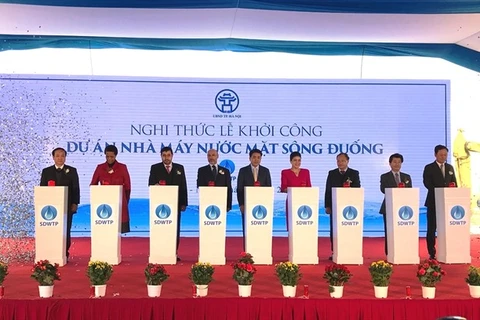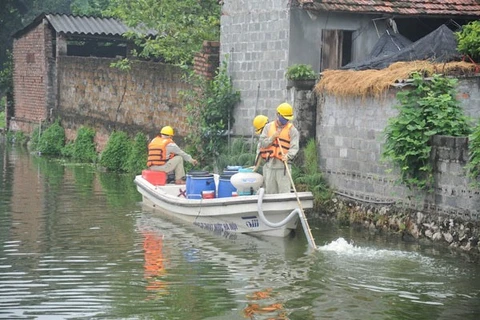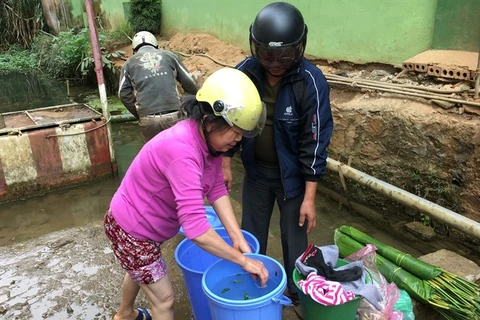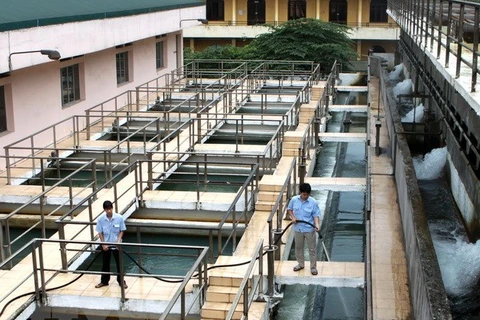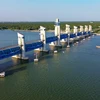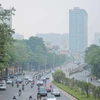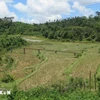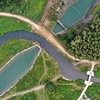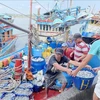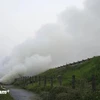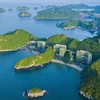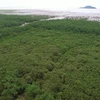Hanoi (VNS/VNA) - More than 3,000 cu.m of untreated wastewater is released into Hanoi’s Cau Bay canal through 26 discharge points daily.
The 13-km-long canal that runs through two districts of Long Bien and Gia Lam in Hanoi has become so polluted that people living along the river could not use its water for irrigation. Concerns have been raised over the bad odour, as well as fear the polluted river could affect underground water sources, threatening their health.
After crossing the two districts, the canal connects with Bac Hung Hai irrigation system which provides water for about 135,00ha of crops and controlled flooding for 185,000ha of cultivation area in three northern provinces of Hai Duong, Hung Yen, Bac Ninh, as well as parts of Hanoi.
In the western part of the city, Nhue River receives wastewater from residential and commercial units in the districts of Bac Tu Liem, Ha Dong, Thanh Tri, Thanh Oai and Thuong Tin.
In January and February this year, researchers from the Institute of Water Resources Planning examined 23 locations along the Nhue River irrigation system, from which people usually take water for farming.
Test results reveal that samples taken from just three locations in January are able to be used for farming, while those taken at the other 20 are not.
February’s results reveal that river water at six locations are suitable for farming while the other 17 locations are not.
Trinh Xuan Hoang, head of the institute’s Division for Water Quality and Environment Management Laboratory and Consultancy said that the water quality of the Nhue River and other rivers in Hanoi did not qualify for agricultural or aquaculture production.
The water had low DO [Dissolved Oxygen is the amount of gaseous oxygen dissolved in the water] and excessive concentration of NH4 and Coliform bacteria, Hoang said. According to the city’s department of Agriculture and Rural Development, untreated wastewater is released into the city’s irrigation system through 997 discharge points, which pollute the water resources provided for the city’s agricultural production.
Despite the fact authorities identified the discharge points, they found it difficult to crack down on cases, as whole residential groups discharge untreated wastewater.
Vice director of the department, Pham Van Khuong, said the city implemented measures to ensure water for farming and protect the environment. For example, it regularly operated eight wastewater treatment plants with total capacity of 304,800 cu.m per day.
The city was speeding up the construction of other plants like Yen Xa, Phu Do, Van Canh, Thanh Thuy and Phung Xa with total capacity of 474,500 cu.m per day as well as building a pumping station to transfer water from Hong (Red) River to purify the polluted Nhue River.
Khuong said that it was also important to tighten inspections and strictly punish violators who discharge untreated wastewater.
Earlier this month, the agriculture department asked people’s committees of districts, wards and communes across the city to co-operate with irrigation firms in detecting and punishing individuals and organisations who discharge untreated wastewater into irrigation systems including rivers and canals.
They also asked to improve communication and raise public awareness about environmental protection, especially water resources.
Hanoi’s irrigation system includes over 1,600 canals with a total length of nearly 13,000 km, thousands of sewers, 18 reservoirs with total capacity of 203 million cu.m. The system provides water for a cultivation area of 281,600 ha and control floods for an area of 477,000 ha.-VNS/VNA
VNA

